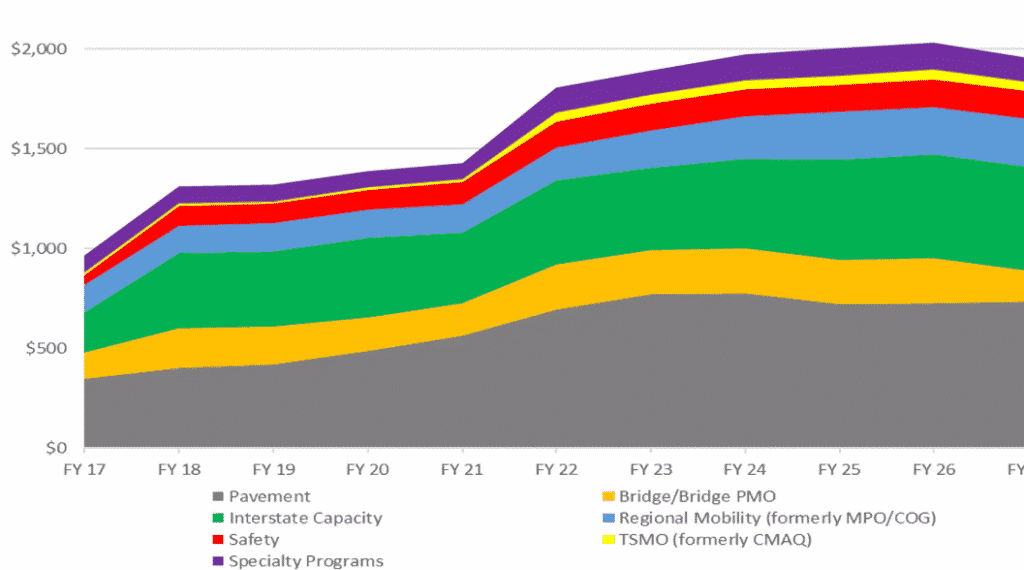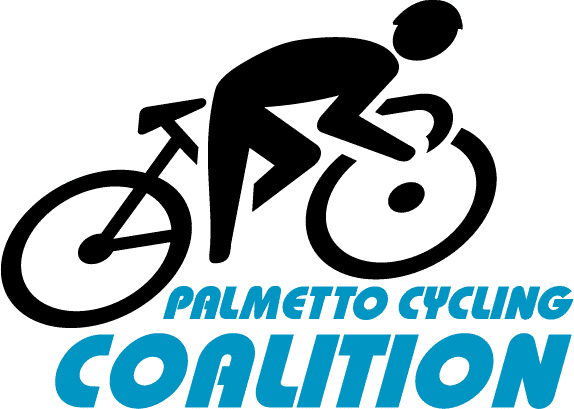SCDOT funding changes from new Infrastructure bill
The new federal Infrastructure Investment and Jobs Act (IIJA), also known as the bipartisan infrastructure bill, is now law. We have been tracking this with national partners, and we are now following up with SCDOT as they move forward.
Revised 10-year Plan with new federal funds incorporated

Source: SCDOT, 2021
Key points to us:
- South Carolina’s Senator Lindsey Graham voted for the IIJA. Thanks to those responding to PCC’s Action Alert urging him to do so.
- Much of this bill is great, especially programs to invest in greenways, remove freeways that fragment downtown areas, and develop and fund complete streets programs.
- The bill could have potentially negative effects if simply used to widen roads (blue bar), but it is broadly eligible for complete streets funding. This is SC’s Guideshare or federal Surface Transportation funding, and COGs and MPOs decide these priorities.
- (red bar) South Carolina’s use of federal highway safety money for non-motorized users must increase to at least 15% of their total. The PCC and our SC Livable Communities Alliance already successfully advocated (a few years ago) for SCDOT’s decision to allocate 10% of its highway safety money for pedestrian and bike safety, so the current budget for SCDOT non-motorized safety money of $5 Million could double or more, given the IIJA increases this funding pool.
- Increasing Safe and Accessible Transportation Options: sets aside 2.5% of State and MPO planning funds that can be used for Complete Streets policies and standards, prioritization plans, plans to increase transit, or plans to ID alternatives to highway capacity.
- Accessibility data will be provided to states, regional planning bodies and local governments, as required now from the USDOT, to measure access across all modes to improve accessibility across all demographics and transportation modes, through a new Transportation Access Pilot Program.
- A new network program called the Active Transportation Infrastructure Investment Program, will fund the building of active transportation networks within and between communities, as a network or spine instead of project by project.
- Urban heat island effects will be addressed in low income communities, in a new Healthy Streets Program.
- Safety Action Plans and project implementation, will be funded through a new Safe Streets and Roads for All Discretionary program for local governments.
- SCDOT has started this already as their Ped/Bike Safety Action Plan (which was a rollout of their new Complete Streets policy), but the IIJA will require them to do so, including: complete a safety assessment or a quantitative analysis of vulnerable road user fatalities and serious injuries including 1) location, roadway functional classification, design speed, speed limit, and time of day, 2) demographics of the locations of fatalities and serious injuries, including race, ethnicity, income, and age, 3) a list of areas identified as ‘high-risk’ to vulnerable road users, and 4) a program to reduce risks to to vulnerable road users in areas ID’d as high-risk. This is a Safe Systems approach.
The Build Back Better reconciliation bill is not law yet and remains in the US Senate. This bill would give tax incentives for e-bike purchases and enable a Neighborhood Equity and Access program.
As a result of the IIJA, SCDOT’s “Specialty Programs” budget will double (the purple bar), which includes some bike and pedestrian projects. In addition, projects for pedestrians and bicyclists, in regional plans (the light blue bar), will have twice as much capacity in 2027 as they did in 2017. This is good news for projects planned by cities and counties that can get approved by their regional planning bodies for regional funding, though they will still be competing with widening projects for increased vehicular capacity. PCC will be working with local and state partners to best leverage the increased funding.
